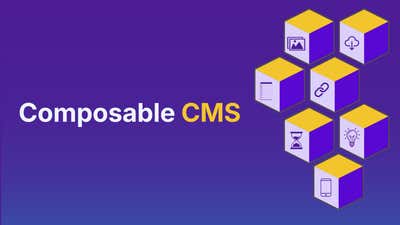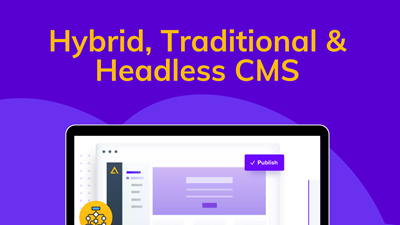Why is a Headless CMS Architecture so Popular?


A headless CMS (content management system) has always been a rising "trend" in the digital content management space. Why? It's architecture not only allows breakthrough user experiences but gives developers the flexibility to innovate. The ability to deliver and deploy content to various digital channels in a way that is scalable, flexible, and easy to manage is also a primary reason for its popularity.
What truly makes a headless CMS is its content-first approach with full APIs to access and display content in any way desired. With this approach, a headless CMS enables you to author your content through the RESTful API and deliver that content wherever you need it.
According to an IDC study, the "content management market is shifting to modernized and agile content management in the cloud, the impact will be slowing in traditional on-premise solutions over the next five years". For me, this statement is saying that a headless CMS architecture isn't going anywhere any time soon. So, why else is a headless CMS so popular? Well, let's explore below.
Flexibility at Your Fingertips
As mentioned, the most significant benefit that a headless CMS provides is its flexibility and content-first approach. How a headless CMS works is the platform itself is separated from all your code via a series of APIs. This type of architecture allows for headless CMS users to send content to any kind of internet-enabled device that can consume APIs and you can specify content types and fragments that you want to push to all the devices or touchpoints.
It’s crucial for your content team to be delivering content on the fly instead of dealing with code and issues with the system, especially when they could be focusing that attention to publishing and writing content. With a headless CMS, you can define the layout of your content and the relationships between them. Imagine if your editors could build pages and manage their content without worrying about its delivery? A headless CMSs ease of use allows developers to build out content and its interface for their front-end users without the complexities that come with it. Content editors can focus on relating their content types in different ways while allowing them to manage the content however they'd like.
Boost the Consumers Omnichannel Experience
It's no secret that content editors need to push their content beyond web and mobile applications to reach consumers on all of today's touchpoints. From desktop, mobile, Apple watches, smart speakers, and even digital screens in airports. A headless CMS can enable brands to reach their consumers by launching and managing their omnichannel marketing strategy.
Google research found that 98% of Americans switch between devices in the same day! That alone is telling us that we have multiple devices within arm's reach, but also means we need to be perfecting our cross-channel experience. According to The CMO Club, 55% of companies have no cross-channel strategy in place, yet 90% of customers expect consistent interactions across multiple channels.
Once just a tool for putting up content and images on websites, a CMS is no longer just for getting content out; it now plays an influential role in the brand experience. It should maximize the profitability of engagement and deliver agile experiences which can turn into tangible outcomes for your brand.
To keep up with today’s customers’ expectation, it is essential to have a CMS that learns from every customer interaction, can drive visitor behaviour through the right use of content, automate manual processes, and adapt content in real-time to maximize shopper engagement. With these predictive and self-learning capabilities, brands can go beyond merely just having a presence on multiple channels.
Bolstering your omnichannel strategy with content that is timely and relevant for each customer, regardless of the channel, doesn’t only give your brand an edge but also increases loyalty with your audience.
Ending Notes
A headless CMS approach and the benefits it provides for users, developers, and editors means it’s only going to become the most popular way to implement a true omnichannel strategy going forward.
If you’re interested in learning more about headless CMS but also to put content at the heart of your omnichannel content marketing strategy, then make sure you check out this fast guide. Learn more about faster time-to-market, choosing a multi-tenant architecture, and the shift of the CMS industry towards a headless approach.
Want to jump on board but don’t know how or where to start? Chat with us to find out what Agility CMS can do for your business or quickly get started with a FREE account!




